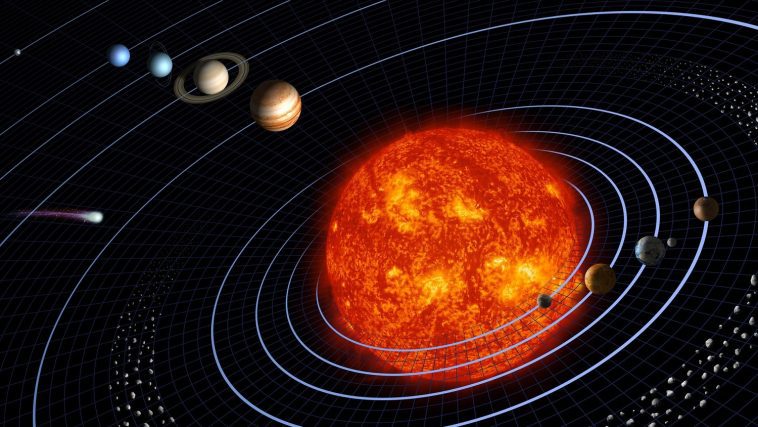[Orginally published as the second part of List of Star Formation Problems]
Solar System Formation Problems:
From its physics to its major predictions, the nebular hypothesis theory of solar system formation has failed. The California Institute of Technology manages NASA’s exoplanet database. Caltech’s astronomer Mike Brown stated:
Before we ever discovered any [planets outside the solar system] we thought we understood the formation of planetary systems pretty deeply… It was a really beautiful theory. And, clearly, thoroughly wrong.
Exoplanet discoveries, with their masses, sizes, composition, and orbital characteristics different than what has been predicted for decades by the standard model of solar system formation, including their retrograde orbits, highly inclined orbits, and hot Jupiters, have effectively falsified that model.
So, the impressive scientific discoveries that, taken together, completely falsify the nebular hypothesis of solar system formation include these:
- exoplanets contradict the predictions of the nebular hypothesis theory
- our Sun is missing 99% of its expected spin (but angular momentum must be conserved)
- our Sun’s rotation is seven degrees off the ecliptic (so did our orbits or the Sun tip?)
- planets would not form because as admitted in Nature in 2013,
- according to standard theory [i.e., gravity], dust grains orbiting newborn stars should spiral into those stars rather than accrete to form planets.
- Small bodies spiral in so quickly, in just a few hundred orbits, that Nature 2014 by anti-science blind faith claims “sub-metre-sized pebbles [grew] into 100-km-sized bodies, possibly in a single leap… through an unknown process.”
- The dust grains and small rocks that do collide break apart instead of accreting to form planetesimals.
- The “probably turbulent” protoplanetary disk “strongly stirs” accretions causing such collisions
– meter-sized bodies “take as little as 100 years to end up close to the star, where they quickly evaporate.” - The short lifetime of meter-sized bodies means there is a “limited opportunity” for them to grow.
- The asteroid collisions alleged to form meteors would have littered the asteroid belt with micrometeoroids, yet probes surprised NASA showing the debris diminished on their journey there.
- The quintillions of small blobs of gas and dust imagined forming in space have no mechanism to compact themselves into the dense black rocks of meteorites.
- The meteorites that cannot be explained cannot themselves be the explanation for the claimed meteoritic bombardment of the formation of planetesimals and planets.
- Even if the laws of physics enabled planet formation, 4.5 billion years is far too little time to build large planets, whether rocky or gaseous.
- “A major embarrassment… Jupiter and Saturn… no one has a satisfying explanation of how they were made.” Science 2002
- “Little is known about how microscopic dust particles can grow 14 orders of magnitude bigger to become a giant planet within the relatively short lifetime of the disk” Nature 2015.
- The missing predicted uniform distribution pattern of solar system isotopes.
- The extremely consistent Uranium isotope ratio, absurd if formed in space.
- Earth doesn’t produce Helium-3 yet it’s too slippery for meteors to trap.
- The other rocky planets don’t have a lot of radioactivity in their crust as Earth does.
- The missing expected uniform distribution of Earth’s radioactivity.
- The journal Earth and Planetary Science Letters 2004 sums up that “we do not really understand the physics of planetesimal formation, or how the planets came to have their present chemical compositions.”
- The contrary-to-expectations fine-tuning of the solar system
- The many contrary-to-expectation transient events in the solar system.
- As it would have been evolving, a faint young Sun can’t explain the early Earth’s warm climate
- That proponents are catastrophists trying to prop up the theory by claiming planetary catastrophes everywhere
- Star formation has seemingly intractable physics problems (consider the Philae landing)
- Contrary to an Oort or Kuiper origin, comets contain Earth-like minerals and rounded boulders
- Short-period comets still exist even though they have lifespans of only thousands of years
- The 1,346 trans-Neptunian objects with known orbits reach perihelion at the ecliptic
- The MNRAS published analysis showing simulations can never demonstrate both planet and asteroid formation
- Peanut-shaped asteroids present a deep, unsolved mystery to secular astrophysicists
- Mercury has greater density than can be accounted for by evolutionary accretion
- NASA’s 45-year lunar dust data collector shows that miles, not inches, should have accumulated in billions of years
- The rocky planets Mercury, Venus, Earth, and Mars would rotate far more slowly if accreted from a condensing nebula
- The origin of the gas giants Jupiter and Saturn has no “satisfying explanation,” as per the journal Science in 2002
- The impact hypothesis for the formation of the Moon would have degassed the water, yet much is found there
- Of the 170+ moons, as with others generally, those that would be explained as forming with their planets should have orbits lying near their equatorial plane but many do not
- 30 moons orbit retrograde (backward)
- That Uranus rotates perpendicularly, Pluto rolls, and Venus rotates backward.
- So the Corporation for Public Broadcasting, the BBC, Nova, Bill Nye, Lawrence Krauss, etc., wrongly built public confidence in the secular origins nebular hypothesis story. The longstanding claims of solar system formation were invented ad hoc to account for the particulars of our own solar system. Now that thousands of exoplanets are being discovered, the storytelling will simply become, as with epicycles and levels of Darwinian selection, more complex.





